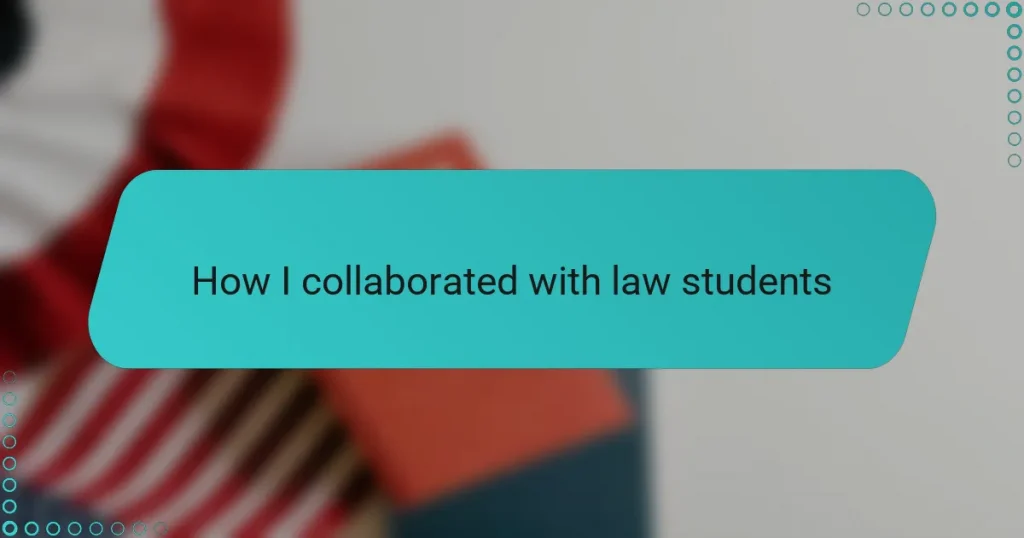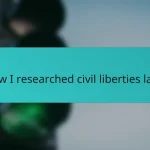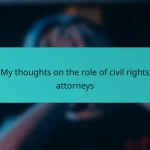Key takeaways
- Legal advocacy is rooted in empathy and strategy; it requires connecting legal arguments to real human stories.
- Collaboration among law students enhances advocacy by combining diverse perspectives, making arguments more compelling.
- Effective communication fosters trust and encourages law students to contribute ideas confidently.
- Success in advocacy projects often comes from clear planning, openness to adapting, and celebrating small wins throughout the process.
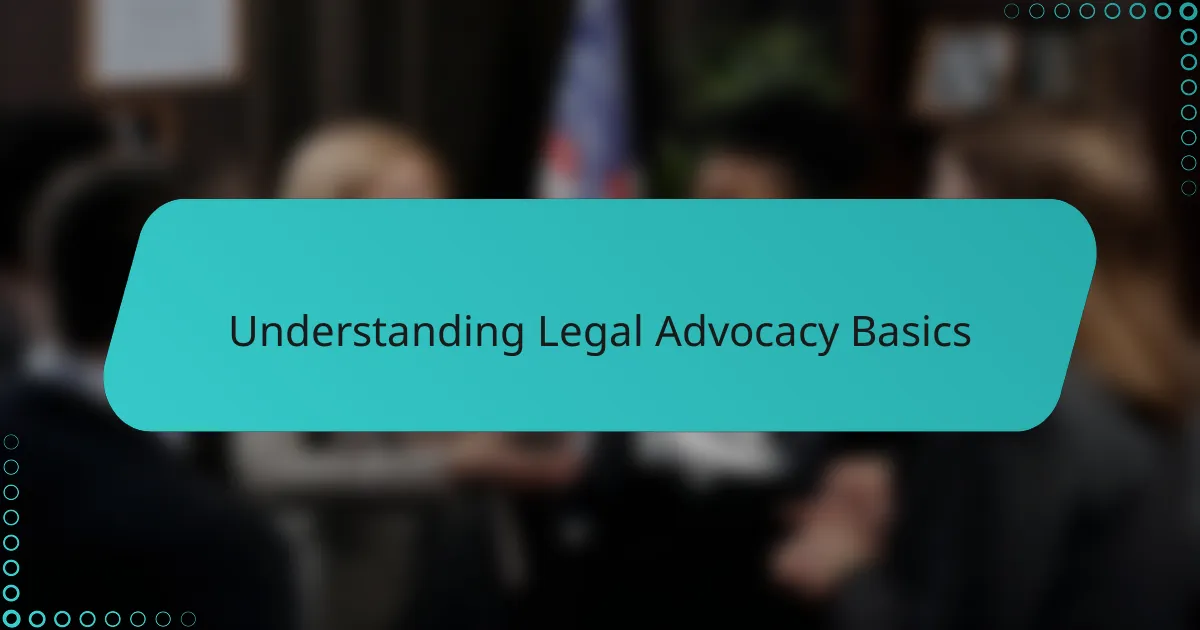
Understanding legal advocacy basics
Legal advocacy, at its core, is about giving voice to those who might otherwise be unheard. When I first started working with law students, I realized how essential it is to grasp this foundation before diving into complex cases. Have you ever thought about what truly drives someone to advocate for justice?
From my experience, understanding the basics means appreciating that legal advocacy is more than just knowing the law—it’s about empathy and strategy. I often reminded my students that every legal argument must connect with real human stories, something that can sometimes get lost in textbooks. This perspective made our collaboration richer and more impactful.
Why does mastering these fundamentals matter so much? Because they set the stage for everything that follows. Without a strong grasp of advocacy’s purpose and principles, even the most talented law students can struggle to make meaningful change. I saw this firsthand, and it reinforced my belief in teaching advocacy as both an art and a science.
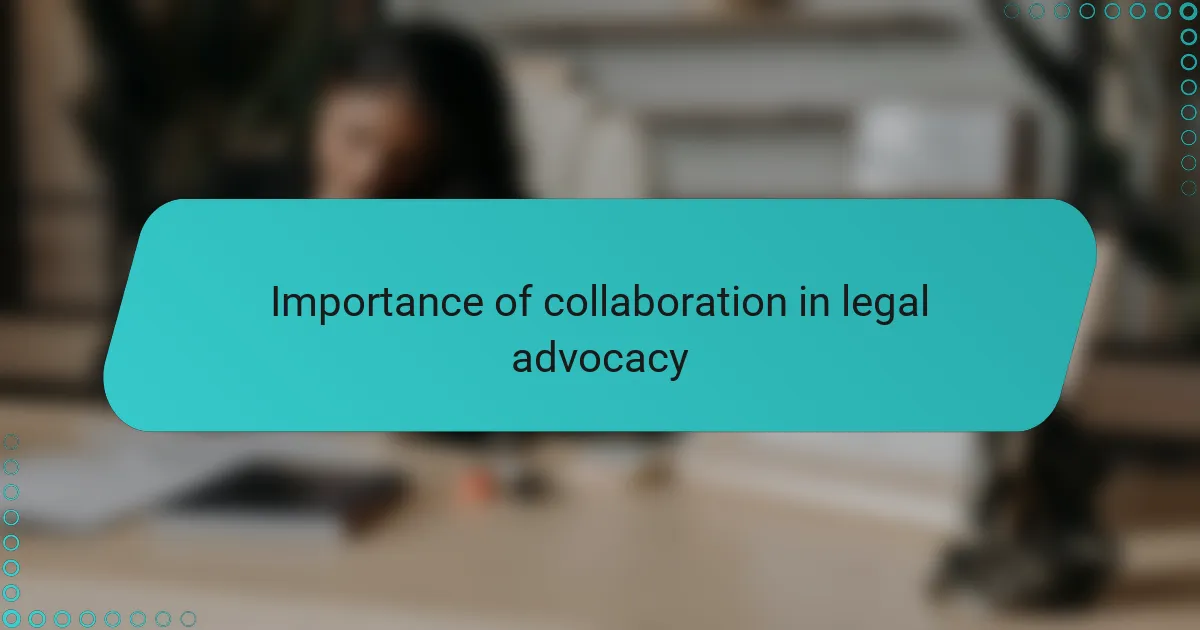
Importance of collaboration in legal advocacy
Collaboration in legal advocacy isn’t just a nice-to-have—it’s absolutely vital. When I worked alongside law students, I noticed how combining different perspectives sharpened our arguments and revealed angles I hadn’t considered on my own. Have you ever been in a situation where someone else’s insight completely changed your approach? That’s the power of teamwork in legal advocacy.
It’s more than pooling knowledge; it’s about learning from each other’s experiences and strengths. I remember a case where a student’s fresh viewpoint helped us see the client’s story in a new light, making our advocacy more compelling and human. Moments like that showed me how collaboration breathes life into legal work, turning abstract laws into real change.
Why is this so important? Because legal advocacy thrives on diverse voices working in harmony. No single person holds all the answers, and when we collaborate, we create stronger, more empathetic campaigns. That’s what I found most rewarding—seeing a group effort transform challenges into solutions that truly resonate.
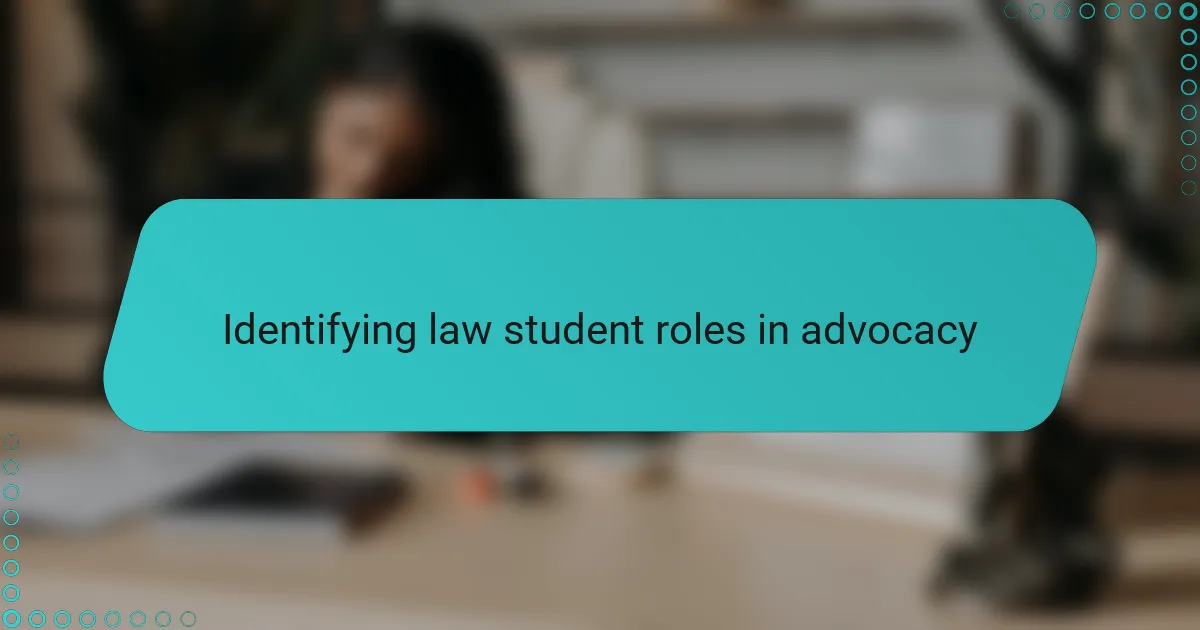
Identifying law student roles in advocacy
When I first began working with law students, it became clear that their roles in advocacy weren’t always straightforward. They could be researchers digging into statutes, storytellers shaping narratives, or strategists planning next steps. Have you noticed how a single law student can wear many hats, sometimes all in one case?
One moment that stands out to me was when a student took the initiative to interview a client deeply, uncovering details that transformed our entire approach. It reminded me that law students often bring a fresh curiosity and empathy that seasoned advocates might overlook. Their ability to connect with the human side of cases is, in my experience, invaluable.
Identifying these roles early helped us work more efficiently and meaningfully. I learned that when roles are clear—whether drafting motions, conducting jury research, or managing communications—students feel empowered and our advocacy benefits tremendously. It made me wonder: how often do we miss leveraging this untapped potential in legal teams?
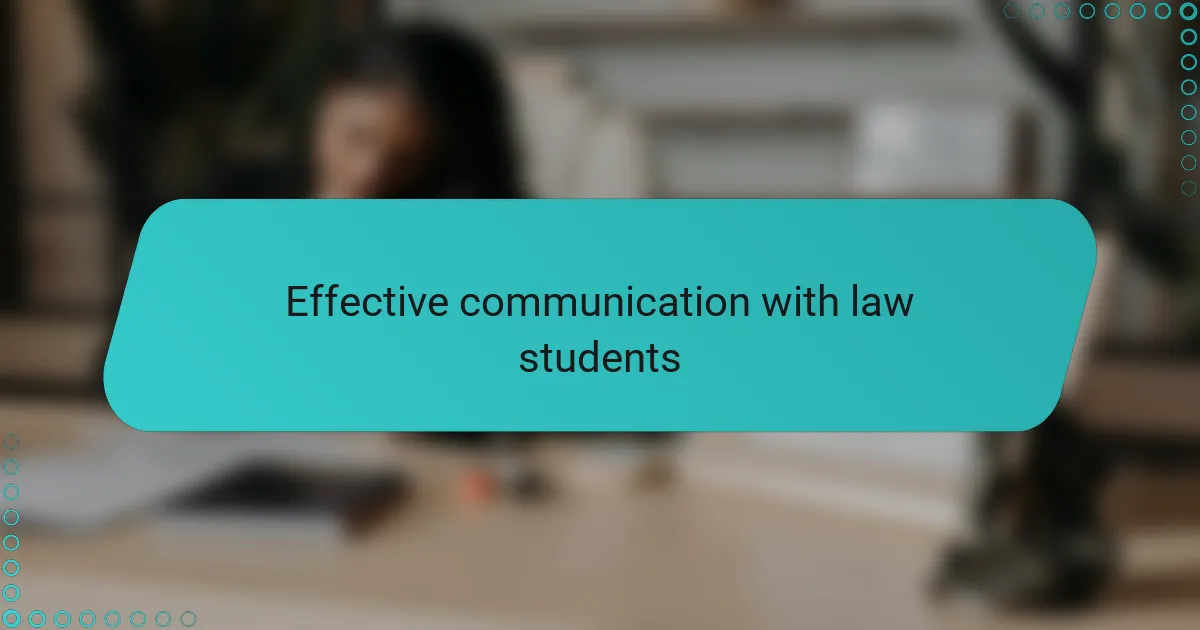
Effective communication with law students
Effective communication with law students became one of the most rewarding parts of my advocacy work. I quickly learned that clarity and patience were key—law students often bring enthusiasm but also a flood of questions. Have you ever tried explaining complex legal strategies in simple terms and realized how much more effective it makes the whole team?
I found that listening actively was just as important as speaking. When I took the time to understand a student’s perspective or concerns, our conversations turned into genuine exchanges rather than one-way instructions. This openness fostered trust and made everyone more confident in sharing ideas, even those that initially seemed uncertain or risky.
One instance that sticks with me was when a student hesitated to voice doubts about our case approach. After encouraging honest feedback, that conversation led us to adjust our strategy in ways I hadn’t anticipated. It taught me that effective communication isn’t just about transmitting information—it’s about creating space where law students feel safe to contribute fully.
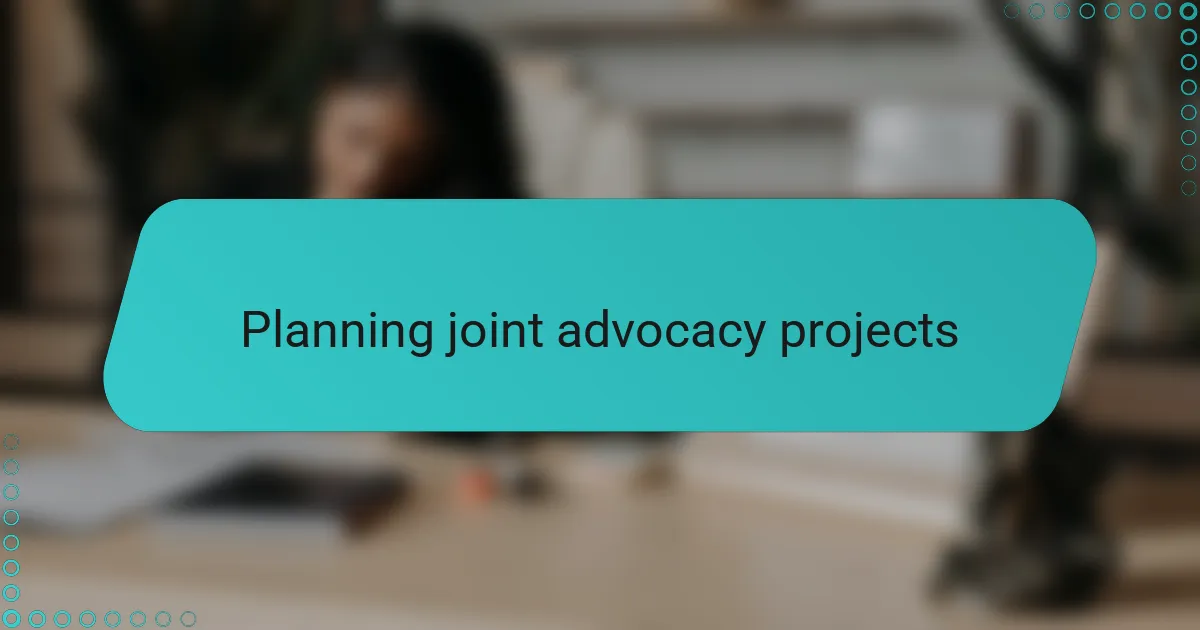
Planning joint advocacy projects
Planning joint advocacy projects always starts with a shared vision. When I first teamed up with law students, I found it crucial to sit down together and map out clear goals—what impact did we want to achieve, and who were we really trying to reach? Have you ever noticed how just putting these intentions on paper can align a team’s energy and focus?
I remember a project where we sketched out roles and deadlines early on, which saved us from confusion later. It felt empowering to break down a big legal challenge into manageable steps, especially for students new to advocacy. That structure didn’t just keep us organized; it gave everyone a sense of ownership and purpose.
Of course, flexibility mattered too. Plans shifted as new information came in, and I saw how openness to adapting made our work stronger. How often do we stick too rigidly to initial plans, missing chances to improve? In my experience, welcoming change and encouraging input from students kept the collaboration dynamic and effective.
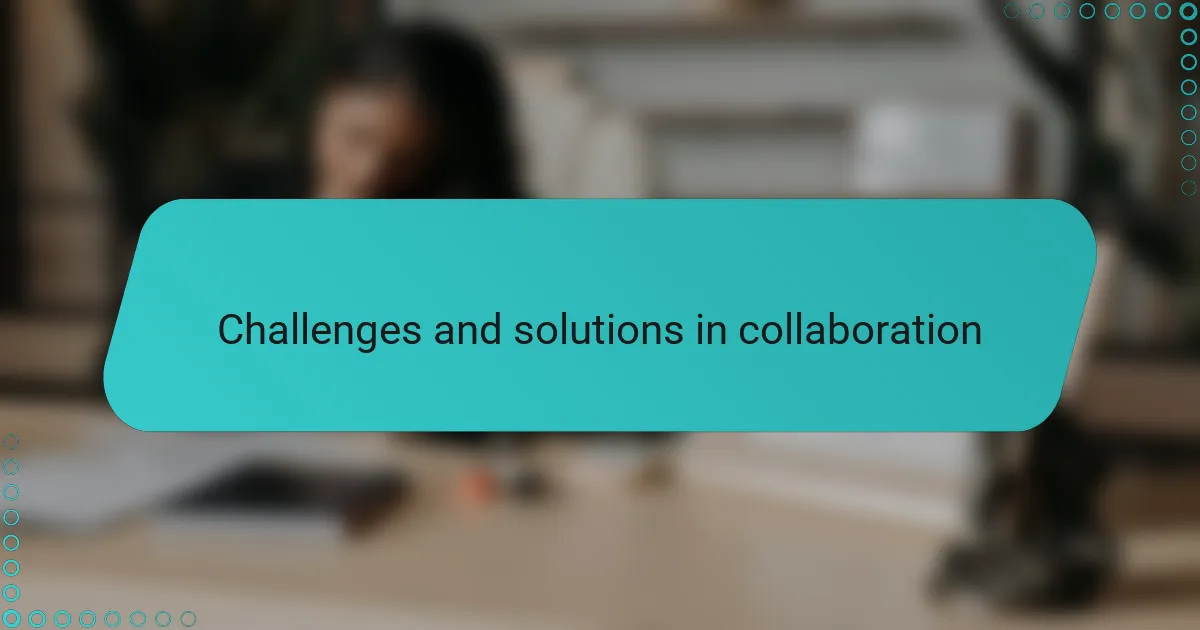
Challenges and solutions in collaboration
One challenge I often faced was balancing the differing levels of experience among law students. Some were eager but unsure, while others were confident yet less open to feedback. How do you create an environment that supports all these personalities? For me, setting clear expectations and encouraging open dialogue helped turn this diversity into a strength rather than a barrier.
Another hurdle was managing time—law students juggle intense schedules, and coordinating meetings or deadlines wasn’t always smooth. I found that breaking tasks into smaller, flexible milestones made the workload feel less overwhelming. Have you ever noticed how little wins can build momentum? Celebrating those moments kept everyone motivated and the project moving forward.
Miscommunication occasionally sparked confusion, especially when complex legal concepts got lost in translation. What I realized is that patience and simplifying jargon go a long way. One particular case taught me that asking students to rephrase ideas in their own words not only confirmed understanding but sparked fresh perspectives I hadn’t considered before. It was a reminder that solutions often emerge from listening carefully.
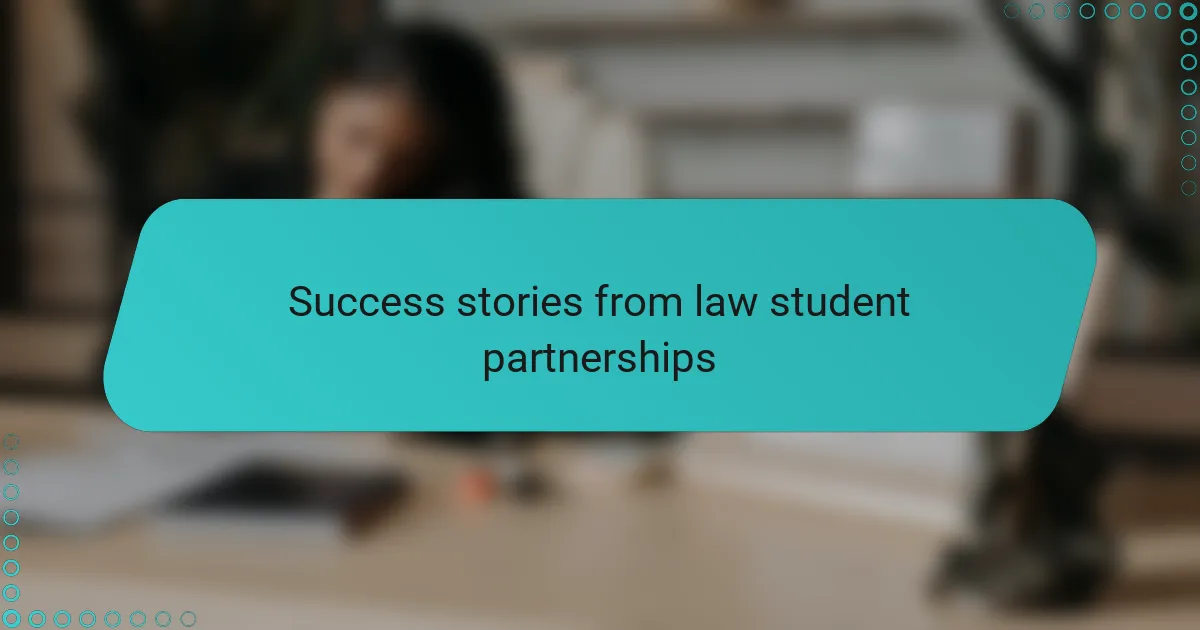
Success stories from law student partnerships
Success stories from law student partnerships often stem from moments where fresh energy meets real-world challenges. I recall working on a housing rights case where a law student’s thorough research uncovered a local ordinance we hadn’t considered—this insight became a pivotal point in our legal strategy. Have you ever experienced how one detail discovered by someone new to a case can completely shift its direction?
There was also a time when a student led client interviews with remarkable empathy, unveiling personal stories that transformed cold facts into compelling narratives. Their ability to humanize the legal issue gave our advocacy a voice that judges and juries couldn’t ignore. It reminded me that law students don’t just supplement legal work—they bring heart to it.
What strikes me most about these partnerships is how the blend of youthful curiosity and guidance creates breakthroughs. When I see students grow in confidence and watch their contributions lead to tangible victories, it reaffirms why collaborating in legal advocacy is not just productive but deeply rewarding. Have you noticed how empowering it feels to mentor someone who then surprises you with their impact?
